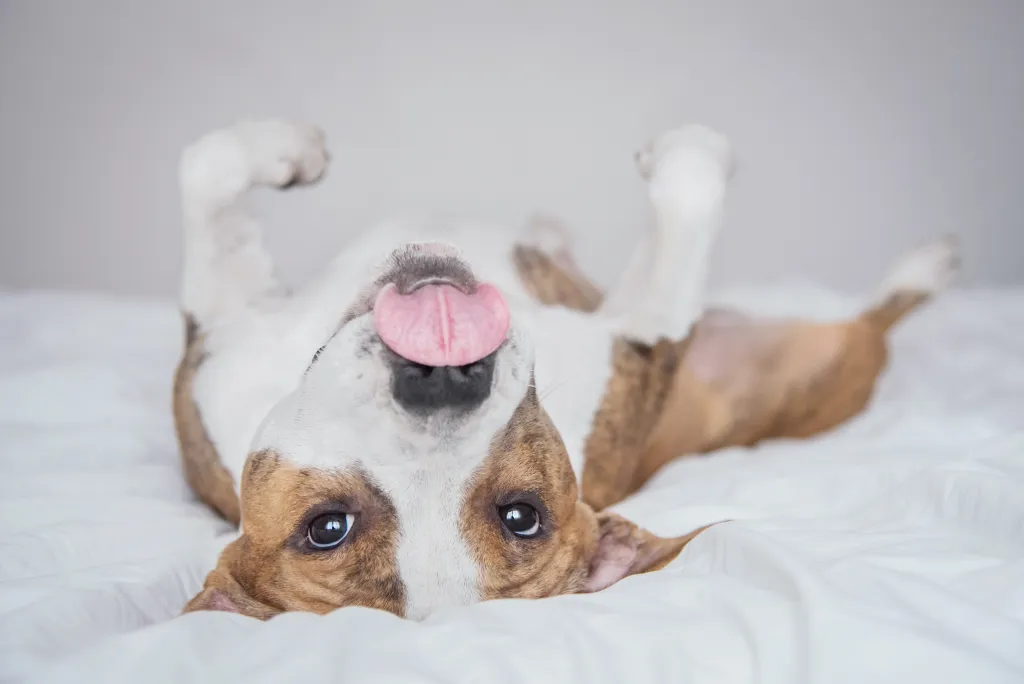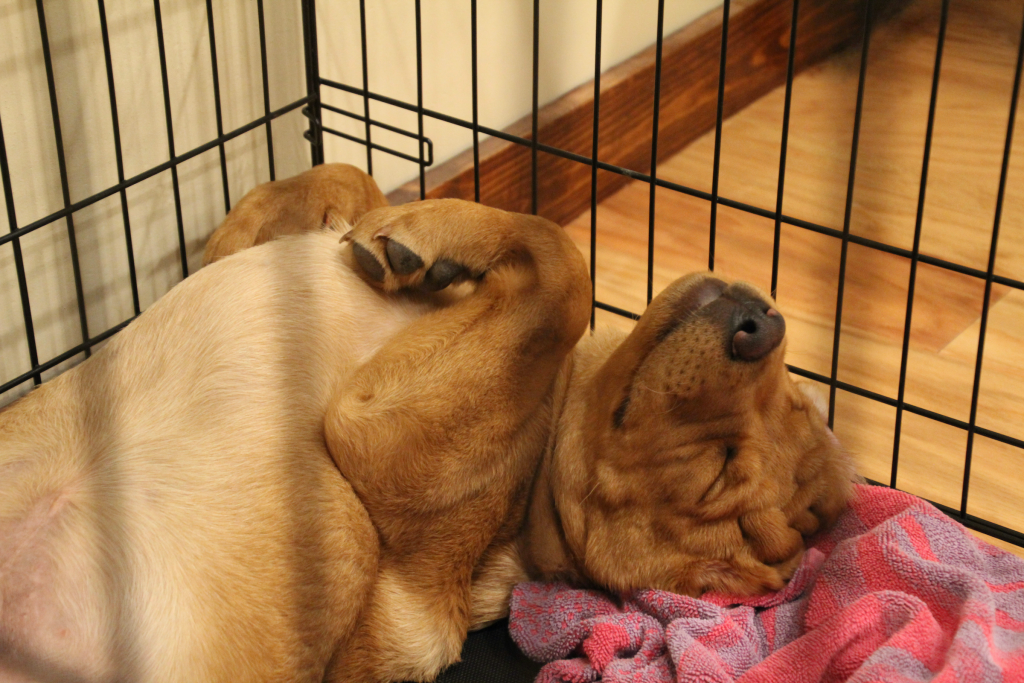:max_bytes(150000):strip_icc():format(webp)/why-do-dogs-sleep-on-their-backs-456953088-2000-563d5e11df104e718698d8dc50055d52.jpg)
Dogs are wonderful companions. They’re sweet, loyal, and sometimes a bit goofy. However, their behavior isn’t always easy to understand, and they can sleep in some pretty unusual positions. Unique sleeping positions can mean anything, from discomfort and joint pain to just getting comfy. If you’ve ever looked over at your dog and seem them spread out on their back, you might be wondering if this behavior is as cute as it looks.
They’re Cooling Off
You might notice your pup with paws in the air more often during hot weather, as this means they need to chill out a little. “Dogs generally sleep on their back to cool down,” McDermott says. “Dogs exchange heat through their paws, and this [position] allows them to cool off.”
Canines have fewer sweat glands than humans, but those they do have are mostly concentrated in their paws. Dogs release sweat there, but nowhere else on their body. This natural oil production is one reason why some dogs’ feet smell like Fritos—and as long as their paws are healthy and not dry and cracked, this is usually normal.
Their belly fur is also thinner than on other parts of their body, so it’s easier for pooches to catch a breeze by exposing their underside. And there’s no need to worry if their tongue is hanging out and they’re panting a bit, as panting is how dogs thermoregulate and cool off.

They Feel Safe and Secure
If your doggo slips into this all-paws-up position while lying next to you on the couch or snuggled up with you in bed, you must be doing something right! “Sleeping on their back is a very vulnerable position and shows trust/comfort in their surroundings,” McDermott says.
Often considered a peaceful appeasement gesture, this posture is a communication signal shared by both wild and domestic dogs to show they’re not a threat. However, it doesn’t necessarily mean they want tickles or belly rubs from humans, though. Not all dogs enjoy those types of pets and touches.
RELATED: What Your Dog’s Body Language Is Trying to Tell You
It’s Just Comfortable
Your pup might simply enjoy being on their backside. And when you sleep as much as dogs do (adult dogs usually snooze 11 hours a day, and growing puppies sleep up to 18 hours), maybe that curl-up position on the doggie sofa is a tad restrictive after a while.
But there’s no need to be concerned if your dog doesn’t sleep on their back. “This could be an aging issue or could be due to not feeling as secure,” McDermott says. You can always check with your vet to make sure your pup’s dreamland positioning is OK.
Seeking attention
If your pup knows you’re nearby while they flip onto their back, it’s possible they’re asking for a belly rub before they doze off for the moment. In times like this, your pup may not seem as sleepy. They may be focused on you instead of their nap, which can be equally as adorable.
If you indulge your buddy with some scratches in moments like this, you may be reinforcing this behavior. It’s up to you whether that is a good thing, but it’s something to keep in mind

When should you worry about your dog’s sleeping position?
The main thing you should watch for in your dog’s sleeping position is any sudden changes, especially if it coincides with other changes in their behavior. Changes in their sleeping position may not mean anything serious. They might just be in the mood for a change, or perhaps their dog bed is starting to get worn out. Sleeping, more or less, is also a normal part of aging for dogs. However, if they stop sleeping on their back at the same time they seem less energetic or begin limping, it could be a sign that your dog is developing joint pain in their hips or back. If you’re unsure about a change in your dog’s behavior, it doesn’t hurt to bring it up to your vet.
Changes don’t always have to be negative, though. You might notice your dog starting to sleep on their back or curled up to you more often as they become more comfortable with you. This can be an especially heartwarming step in bonding with your new dog.
Now that you know what it means when a dog sleeps on their back, you can sit back and enjoy all of your goofy pup’s funny nap positions. You can smile and laugh at their silly postures with no guilt whatsoever — who doesn’t enjoy stretching out for a comfortable rest? Maybe you’ll even let it inspire you to get in on the coziness. Nap time, anyone?